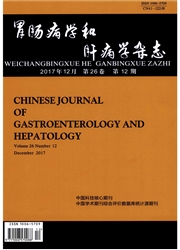

 中文摘要:
中文摘要:
目的 探索用生物材料三维培养胚胎干细胞(embryonic stem cell,ES细胞)并向肝细胞分化的可行性。方法 胰酶消化悬滴法形成5d的鼠拟胚胎,将1×10^6/mL鼠ES细胞与细胞外基质Matrigel^TM 1:1混合接种于聚乳酸(poly-L-lactic acid,PLLA)和聚乙醇酸(polyglycolic acid,PGA)共聚合三维支架内,用DMSO、地塞米松、HGF、FGF4、胰岛素等诱导ES细胞向肝细胞分化,动态观察Es细胞的培育和生长情况。并用RT-PCR、免疫荧光染色检测其肝细胞标志物白蛋白(ALB)和甲胎蛋白(AFP)的表达。结果 立体显微镜见ES细胞及分化细胞在聚合支架材料上呈三维立体状态生长,并保持细胞活力,随培养时间延长不断增殖。RT-PCR检出分化细胞表达ALB mRNA和AFP mRNA,同样免疫荧光染色也证实表达ALB和AFP。结论 ES细胞可在生物材料聚合三维可降解支架及Matrigel上生长,并在诱导剂的作用下向肝细胞分化。
 英文摘要:
英文摘要:
Objective To investigate the possibility of the three-dimensional culture and differentiation of embryonic stem cells (ESc) into hepatocytes on biomaterials. Methods Mouse ESc were resuspended at a concentration of 1 × 10^6 cells per 1 mL of culture medium and mixed with Matrigel^TM at 1 : 1. The mixture were seeded into poly-L-lactic acid and polyglycolic acid copolymerized scaffolds and cultured in differentiation medium containing DMSO, dexamethasone, hepatic growth factor (HGF) , fibroblast growth factor (FGF) 4 and insulin, et al. ESc growth and proliferation on the three-dimensional biodegradable polymer scaffold were observed by stereomicroscope. The expressions of hepatocyte markers, albumin (ALB) and α-fetoprotein (AFP) were examined using RT-PCR and immunofluorescence. Results Stereomicroscopy showed that mouse ESc or ES cell-derived cells were attached to the copolymer scaffolds and grew actively in a three-dimensional. Cells increased in quantity and density as time goes on. The ALB and AFP mRNAs were determined in differentiating ESc at day 7 and 14 by RT-PCR. Control group without inductor did not express ALB, but mRNA expression of AFP was seen at day 14. Immunocytochemistry staining revealed that the differentiating ESc were positive for ALB and AFP. Conclusion ES cells can be cultured and differentiated into hepatocytes with MatrigelTM and inductors on three-dimensional biodegradable polymer scaffold.
 同期刊论文项目
同期刊论文项目
 同项目期刊论文
同项目期刊论文
 期刊信息
期刊信息
